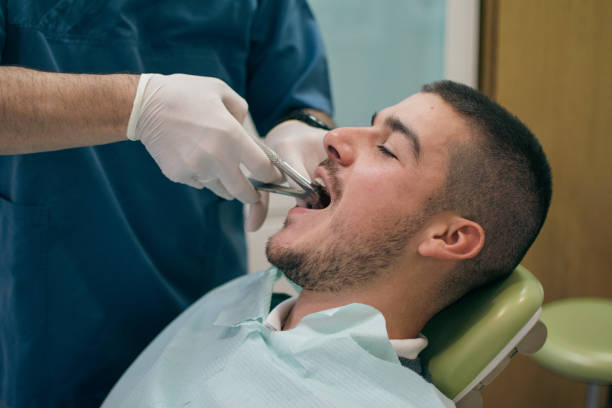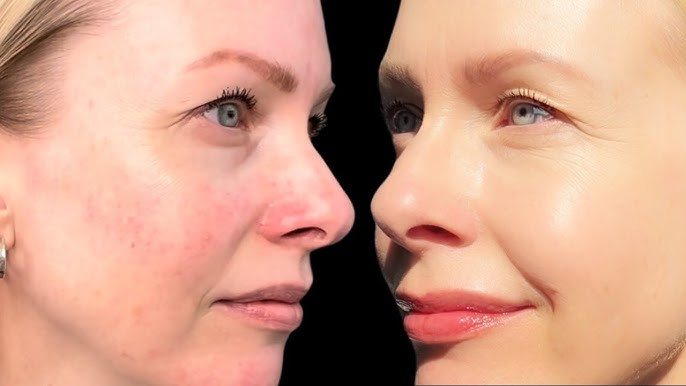Summary
Did you know?
According to the American Association, 85% of wisdom teeth are removed yearly.
Removing your wisdom teeth is important in most cases since leaving them can contribute to multiple dental issues. If you experience any signs and symptoms of wisdom tooth-related dental problems, it is essential for you to get proper tooth extractions in Hutchinson, KS.
But how does this entire thing about extracting a wisdom tooth work? This blog will answer all your questions related to wisdom tooth extraction with a deep dive into the following topics:
- Common Symptoms Related To Wisdom Tooth Extraction
- How To Prepare For a Wisdom Tooth Extraction?
- How Does The Wisdom Teeth Removal Procedure Work?
- Tips To Enhance Recovery After Wisdom Tooth Extraction
Let’s understand these topics better to understand wisdom tooth extraction properly.
Common Symptoms Related To Wisdom Tooth Extraction
Granted that everyone has four wisdom teeth, but that does not mean everyone has to get rid of them. This makes it important to watch for the signs and symptoms indicating you need a wisdom tooth extraction. Some of the most common of these signs and symptoms include:
1. Impaction:
Impaction is unique when a wisdom tooth does not erupt fully or gets stuck beneath the gum tissue or jawbone. This can result in many dental complications, making wisdom tooth extraction imperative.
2. Pain and Discomfort:
If you are experiencing any kind of pain and discomfort, it might be because of an impacted wisdom tooth. In these cases, you might experience throbbing pain, tenderness in the jaw, and difficulty chewing.
3. Crowding:
Teeth crowding is a widespread consequence of wisdom teeth. These teeth can push against other teeth, causing dental issues like misalignment and overcrowding.
4. Damage to Surrounding Teeth:
If you have an impacted wisdom tooth, it can put pressure on nearby teeth. Leaving this untreated for a long can contribute to damage or infection in surrounding teeth.
5. Gum Disease or Infection:
Infections and gum diseases are more common consequences of wisdom teeth. Most partially erupted wisdom teeth create a breeding ground for bacteria, increasing the risk of gum inflammation and infection.
6. Cyst or Tumor Development:
In rare cases, wisdom teeth can contribute to the formation of cysts or tumors in the jawbone. It is important to ensure you do not take these things lightly and access prompt treatment from a trusted Hutchinson, KS, dentist.
How To Prepare For a Wisdom Tooth Extraction?
You need not do much to prepare yourself for a wisdom tooth extraction. This will be very similar to your conventional dental visits as an adult. Nonetheless, here are some things that you can expect while preparing for a wisdom tooth removal:
Consultation
The first thing you need to worry about is scheduling an appointment for a dental consultation. When you go for the consultation, discuss your medical history, allergies, medications, and any concerns about the procedure and anesthesia options.
Pre-Operative Instructions
After you have completed your consultation and the dentist has recommended extracting the tooth, you will receive detailed pre-operative instructions. These instructions are simple: All you need to do is fast before the surgery, discuss the medications to avoid, and decide what to bring on the day.
Arrange Transportation
It is worth noting that you will need anesthesia to extract your wisdom tooth. This makes it essential to get a responsible adult to drive you home after the procedure, as the effects of the anesthetic might take time to weather off.
How Does The Wisdom Teeth Removal Procedure Work?
The procedure for removing your wisdom is relatively simple, with just a few steps. Remember that in most cases, the entire tooth extraction takes about 45 minutes to an hour to remove all your wisdom teeth. So, let’s analyze these steps in detail to help you better prepare for the procedure:
Step 1: Anesthesia
In most cases of wisdom tooth extraction, the dentist will give you local anesthesia to numb the area around the wisdom teeth. They might even recommend sedation options like nitrous oxide (laughing gas) or intravenous (IV) sedation based on your needs and the tooth’s location in your mouth.
Step 2: Accessing the Wisdom Teeth
This is the next and one of the most critical steps in the process. The dentist will make an incision in the gum tissue. This will expose the tooth and surrounding bone, enabling them to continue with the tooth extraction process.
Step 3: Tooth Removal
This is another crucial step in the entire process, and the dentist will finally remove the affected tooth. They will first loosen the wisdom tooth to make it flexible enough for smooth and painless removal. In some extreme cases, your tooth might need sectioning for easier extraction.
Step 4: Cleaning and Closing
Now that your wisdom tooth is out, the dentist will clean the extraction site and may place stitches to close the wound. This will close the wound properly and ensure prompt and proper recovery.
Step 5: Gauze Pad Application
This is the final step of the entire wisdom tooth extraction process, where the dentist will place a gauze pad will be placed on the extraction site. This will help control bleeding from the affected site and make it easier for affected tissues to start the repair work.
Tips To Enhance Recovery After Wisdom Tooth Extraction
There is no denying that you will experience some swelling and discomfort after removing your wisdom tooth. However, here are some tips to help you hasten the recovery process:
1. Pain Management:
Make it a point to take all prescribed pain medications as directed by your dentist.
2. Reduce Swelling:
You can reduce swelling in the affected area by applying ice packs to your cheek near the extraction site for 24-48 hours.
3. Diet:
Diet is very important after a wisdom tooth extraction procedure. Hence, it is recommended that you stick to soft foods and avoid chewing on the extraction site.
4. Oral Hygiene:
To maintain proper oral hygiene, rinse your mouth with warm salt water after meals and before bed. You must also avoid brushing directly on the extraction site for the first 24-48 hours.
Takeaway
- Everyone has four wisdom teeth, two in the upper jaw and two in the lower, and 85% of wisdom teeth eventually need to be removed.
- There are many signs and symptoms of wisdom teeth problems that you need to keep an eye out for.
- You must take some essential preparation measures to ensure the completion of the seamless procedure.
- There are many ways you can hasten your recovery after getting a wisdom tooth extraction.
- Let’s fix your smile with our experts at Grant D. Ringler, DDS.




